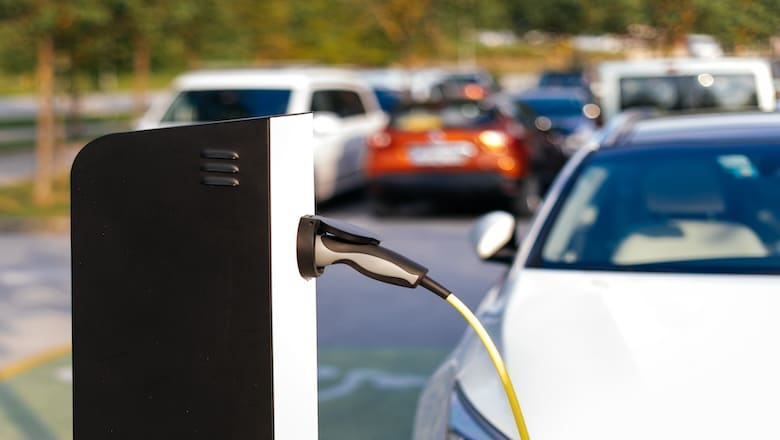How to take a greenhouse gas emissions inventory
Getting started on the path toward climate neutrality means establishing a baseline accounting of your institution's greenhouse gas emissions. Whether you choose to account for Scopes 1, 2, and/or 3 emissions, we have the skills to help you—or you can use these tools to take your own inventory.

Greenhouse gas (GHG) accounting is the process of collecting and reporting data related to anything that can contribute to an institution’s greenhouse gas footprint. This most often includes Scopes 1 and 2 emissions, and can include Scope 3 emissions as well.
For an institution to develop a plan to reduce their greenhouse gas emissions, it is critical that a baseline is developed to understand the institution’s impact. From there, the institution can set realistic targets for reducing emissions based on their existing conditions.
GHG accounting can be done internally via data collection and Excel spreadsheets. There are also several tools, such as SIMAP®, that can help an institution organize their data and convert it into GHG emissions (measured in metric tons of carbon dioxide equivalent).
Key terms and definitions
Greenhouse gases (GHG) are gases that contribute to the greenhouse effect by block heat from escaping the earth’s atmosphere (absorbing infrared radiation).
The common GHG tracked based on human activities that are “forcing climate change” are carbon dioxide, methane, nitrogen dioxide, and fluorinated gases (listed in order of their average lifetime in the atmosphere). A common GHG is water vapor, which is a “feedback” gas that responds physically or chemically to changes in temperature. To learn more about greenhouse gases, visit the EPA’s website.
Unit definitions:
- MTCO2e — metric tons of carbon dioxide equivalent
- Btu — British thermal units, a unit of measure for energy consumption

What to include in your assessment
It’s up to you and your institution to decide whether to include all three scopes of greenhouse gas emissions in your inventory. Here’s a more detailed list of what to measure in each category:
Scope 1
- Natural gas
- Distillate oil (Nos. 1, 2, 3, and 4)
- Residual oil (Nos. 5 and 6)
- Propane gas
- Coal
- Gasoline
- Diesel
- Refrigerants or chemicals
- Fertilizer or animal waste
Scope 2
- Purchased grid electricity
- Purchased renewable electricity (counts as a credit)
Scope 3
- Purchased goods (paper, food, etc.)
- Construction materials
- Commuter travel
- Airplane travel
- Waste and recycling processing
- Wastewater treatment
Steps to taking a greenhouse gas emissions baseline accounting
- Set boundaries. Determine which properties you are going to include in your assessment. This can be based on operational control, financial control, ownership, etc.
- Inventory data. Determine what data your institution already tracks, and how it is being tracked.
- Define scope. Determine what emissions you are going to track and include in your baseline assessment. This can be based on what data the institution already tracks, or what the institution plans to track in the future.
- Set assumptions. Assumptions need to be set about what emissions rates are going to be used for different emissions sources. In some cases, an average or estimated value may be necessary.
- Determine tracking tool. There are several tracking tools, both internal an external, that an institution can use. For example, a simple Excel model or an online tool such as SIMAP could be used.
- Collect data for baseline. Once you have decided what you are going to be collecting and tracking, set up a data collection system that works for your institution’s workflow and staffing.
Resources
- SIMAP is an online tool created by the University of New Hampshire and is widely used as the standard for greenhouse gas tracking in educational institutions. New users can do a two-month trial subscription to SIMAP at no cost. After that, an annual subscription is $400/year. Users can share SIMAP data to STARS and Second Nature (SNRP)
- ENERGY STAR® Portfolio Manager (ESPM) is an online tool created by ENERGY STAR® to help institutions track and benchmark their energy and water usage. It can also be used to determine GHG emissions associated with energy use. ESPM is free to use. Users can link ESPM to STARS, GRITS, LEED and the Second Nature Reporting Platform.
- Second Nature is an organization that targets higher education for climate action. The Second Nature Reporting Platform (SNRP) is a tool that was created by Second Nature for institutions to pledge to climate neutrality and provide progress updates annually. SNRP has data sharing with both SIMAP and ESPM. SNRP users can access GRITS Basic for free and GRITS unlimited at a discount. SNRP users can access select SIMAP features at a discount.
- GHG Protocol by World Resources Institute is a resource for global standardized greenhouse gas accounting. It provides a variety of free resources for collecting and measuring GHG emissions, as well as paid online trainings for more in-depth guidance.
- GRITS is a platform to track a project’s cost, energy usage and carbon reduction. It can be beneficial for long-term energy reduction and GHG planning.
- GreenerU has developed multiple greenhouse gas emissions baseline assessments for its clients using all of the above.
If you’re just getting started with developing a baseline greenhouse gas emissions accounting or are looking to measure your institution’s progress against a previous year’s baseline, GreenerU can help. Contact us to start a conversation.



